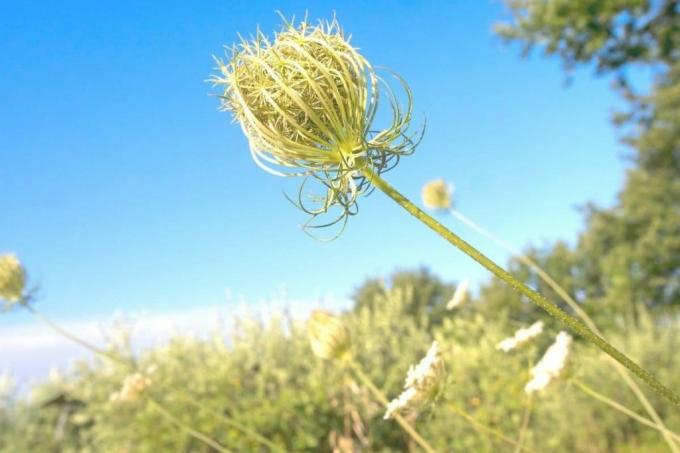
table of contents
- Profile: Wild carrot
- Appearance
- Wild carrot location
- frequently asked Questions
Did you know that carrots can also be found in the wild? You have probably seen the wild variant before. In our profile we present the wild carrot to you in more detail and reveal where you can find the plant.
In a nutshell
- from the umbelliferae family
- biennial cycle with storage root and inflorescence
- prefers sunny, dry, calcareous locations
- widespread distribution: roadsides, dams, meadows, fallow land
Profile: Wild carrot
The wild carrot (Daucus carota subsp. carota) used to be a popular vegetable. Today, however, only very few people know them. All the important facts about the wild plant are therefore summarized in our profile:
- Order: Umbelliferae (Apiales)
- Family: Umbelliferae (Apiaceae)
- Genus: Carrots (Daucus)
- natural occurrence: Europe, North Africa, Macaronesia, Asia, Caucasus
- Growth height: 20 - 120 cm
- Cycle: biennial: first year developing a storage root; second year inflorescence
- Roots: deep roots up to 80 cm
- Root color: white
- Flower color: white
- Fruit ripening: July to September
- Germination: cold germs
- Use: kitchen and medicinal plant

Tip: All parts of the wild carrot are edible. The wild carrot is a little sweeter than that Garden carrot variety and can be used in salad, as a vegetable, as a decoration or as a tea.
Appearance
The plant, also known as the yellow turnip, consists of several parts:
- Root: white; pale; thickened; with typical transverse furrows; lignified in the second year
- Stem: upright; abundantly branched; filled with protruding small bristles
- Leaves: two to four times pinnate
- Bracts: long, pinnate in three parts
- Flower: white; four-beam; a small purple to black colored "carrot" in the middle
When fully open, the flower of the herbaceous plant is flat arched. When blossoming, in damp weather and when the fruit is ripening, however, the umbel resembles the shape of a bird's nest. The nectar-bearing flowers are among the most common flowers along the way and are an important food source for
- dovetail
- Wild bees
- Sand bees
- Sawfly
- Bed bugs
- Beetle
- To fly
After flowering, a bird's nest-like fruit cluster with egg-shaped Velcro fruits forms.

Note: Since the wild carrot is a winter bird, the sprout remains visible even after the vegetation period.
Wild carrot location
The wild carrot is relatively undemanding per se and needs only a few nutrients. So it can adapt to many soil conditions and is therefore now widespread all over the world. It grows preferentially in the flat and hilly areas of sub-ocean to sub-continental as well as subtropical to north temperate climates. It thrives best in sunny locations with dry, well drained and calcareous soils. You can find them mainly on
- Roadsides
- Insulation
- sunny embankments
- open meadows and pastures
- Fallow land
- Ruderal locations
- Herbaceous and weed corridors
Wherever the plant occurs, it can usually be found in larger quantities.

frequently asked Questions
Yes, she is probably one of the parents of today's garden carrot. This emerged after crossing different types of carrots several times and has existed in its current form around the 18th century. Century.
This is mainly due to the low carotene content in wild carrots. The natural color carotene is responsible for the typical yellow-orange color of garden carrots.
Yes. Many umbelliferae resemble the appearance of the wild carrot. However, the plant is usually easily recognizable from the carrot-like odor of the rubbed leaves. Before consuming it, however, you should make sure that it is not a poisonous doppelganger.
No. Wild carrots are rarely grown as garden carrots are mostly preferred. The wild carrots must therefore be grown yourself or looked for in nature.
